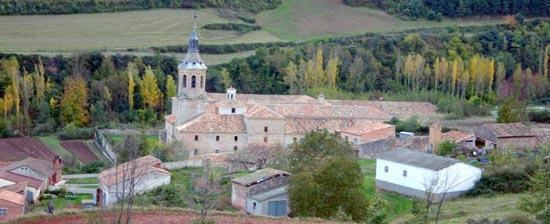Time zone CET (UTC+1) Elevation 728 m Province La Rioja Local time Tuesday 3:45 AM | Autonomous community La Rioja Demonym(s) Emilianenses Postal code 26326 Area 31.19 km² Population 248 (2014) | |
 | ||
Weather 4°C, Wind NE at 3 km/h, 85% Humidity | ||
San mill n de la cogolla
San Millán de la Cogolla ([san miˈʎan de la koˈɣoʎa]) is a sparsely populated municipality in La Rioja, (Spain). It takes its name from a 6th-century saint (Saint Emilianus or San Millán) who lived here, and from the shape of the surrounding mountains (the word cogolla means "cowl"). The village is famous for its twin monasteries, Yuso and Suso, which were declared a World Heritage Site in 1997. There were 293 inhabitants registered in 2009, the population having fallen significantly during the twentieth century.
Contents
- San mill n de la cogolla
- Map of 26226 San MillC3A1n de la Cogolla La Rioja Spain
- Pueblos bonitos de la rioja 1 4 pueblos y lugares con encanto san mill n de la cogolla y ezcaray
- References
Map of 26226 San Mill%C3%A1n de la Cogolla, La Rioja, Spain
San Millán has a claim to being the birthplace of the Spanish language. The area is Spanish-speaking but some of the local place-names are of Basque origin, and there is evidence that Basque was spoken locally a thousand years ago (see Glosas Emilianenses).
Jews were living here as early as at Nájera, and they suffered greatly in the civil war between Peter of Castile and Henry II of Castile. On October 15, 1369, at the request of the directors of the small aljama of San Millán, whose cause was advocated by "certain Jews who were received at court," Henry II of Castile ordered that "the Christian men and women and the Moorish men and women" should immediately discharge all their debts to the Jews, "that the last-named might be able to pay their taxes the more promptly." On September 10, 1371, however, the king released the abbot and all the monks of San Millán from whatever debts they had contracted with the Jews since the Battle of Nájera.
